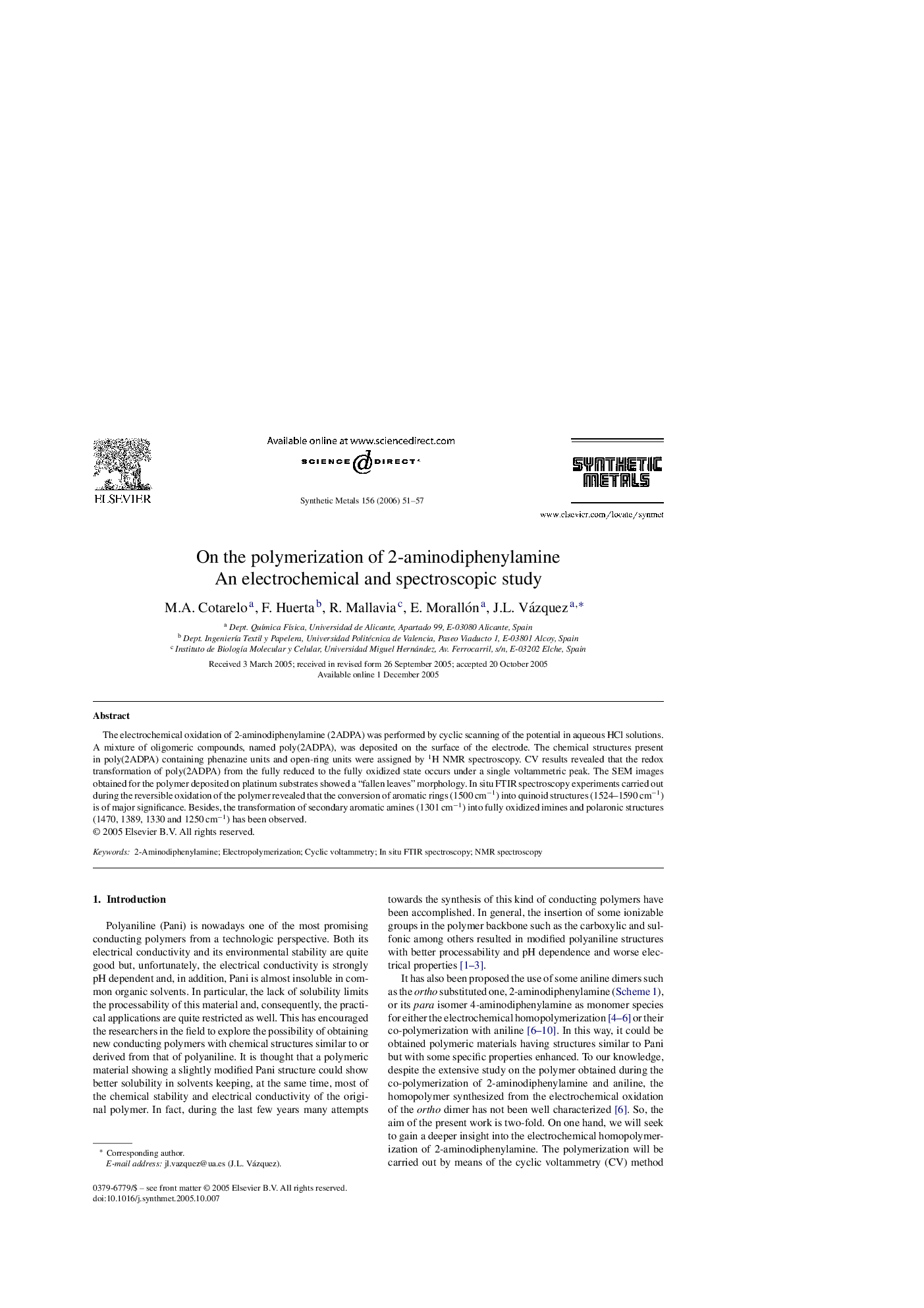| Article ID | Journal | Published Year | Pages | File Type |
|---|---|---|---|---|
| 1443714 | Synthetic Metals | 2006 | 7 Pages |
The electrochemical oxidation of 2-aminodiphenylamine (2ADPA) was performed by cyclic scanning of the potential in aqueous HCl solutions. A mixture of oligomeric compounds, named poly(2ADPA), was deposited on the surface of the electrode. The chemical structures present in poly(2ADPA) containing phenazine units and open-ring units were assigned by 1H NMR spectroscopy. CV results revealed that the redox transformation of poly(2ADPA) from the fully reduced to the fully oxidized state occurs under a single voltammetric peak. The SEM images obtained for the polymer deposited on platinum substrates showed a “fallen leaves” morphology. In situ FTIR spectroscopy experiments carried out during the reversible oxidation of the polymer revealed that the conversion of aromatic rings (1500 cm−1) into quinoid structures (1524–1590 cm−1) is of major significance. Besides, the transformation of secondary aromatic amines (1301 cm−1) into fully oxidized imines and polaronic structures (1470, 1389, 1330 and 1250 cm−1) has been observed.
